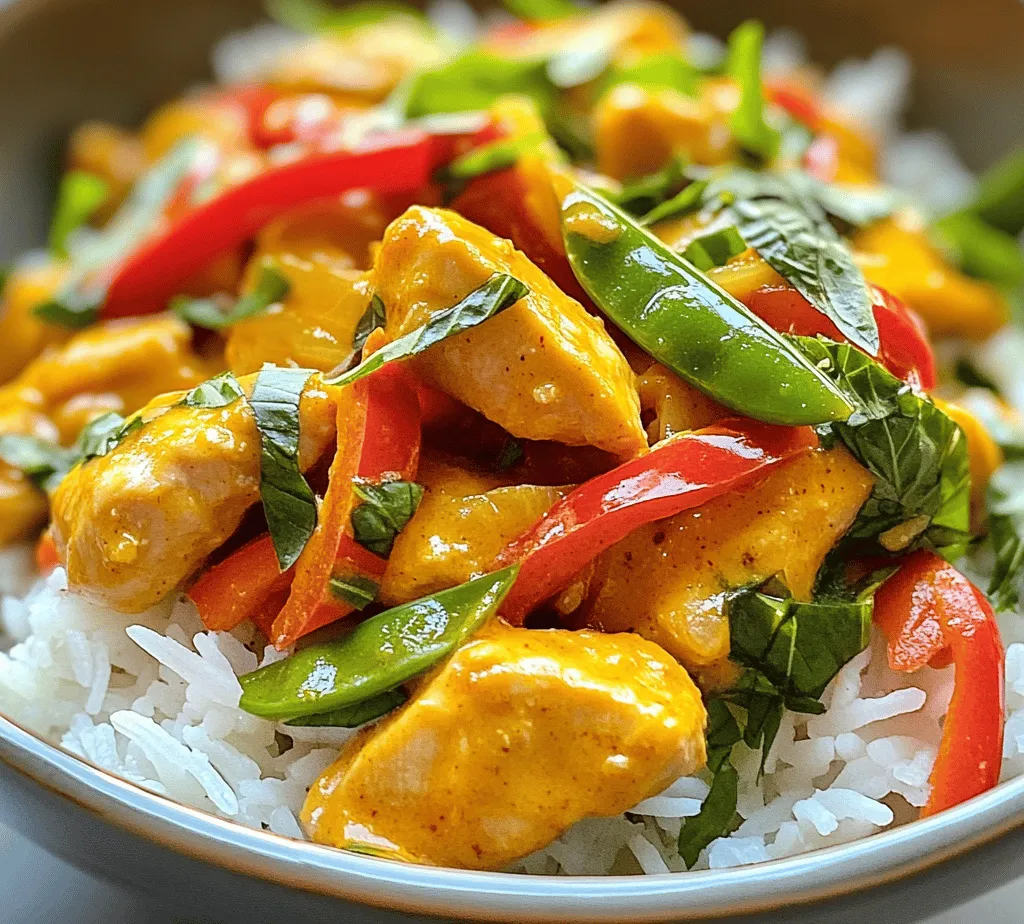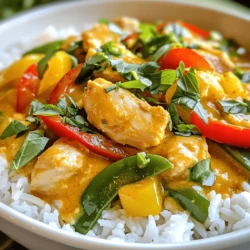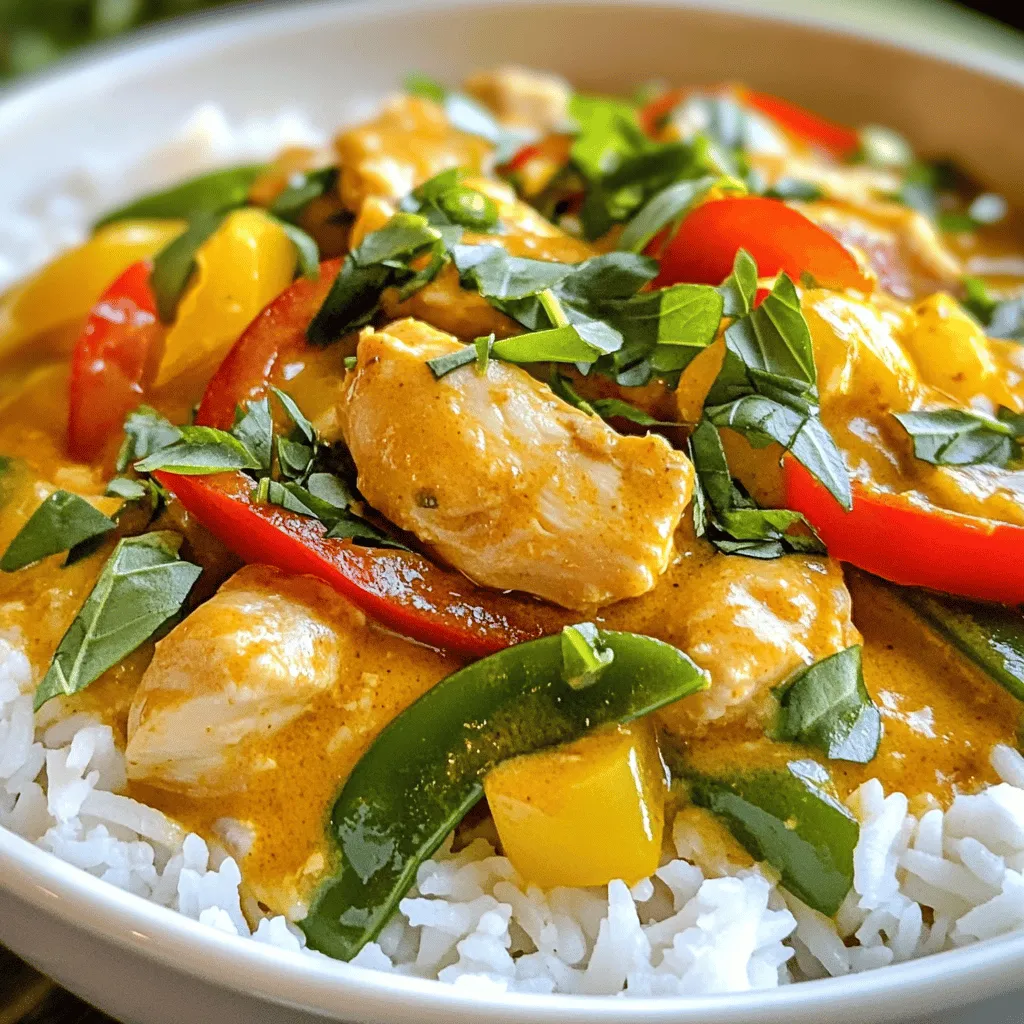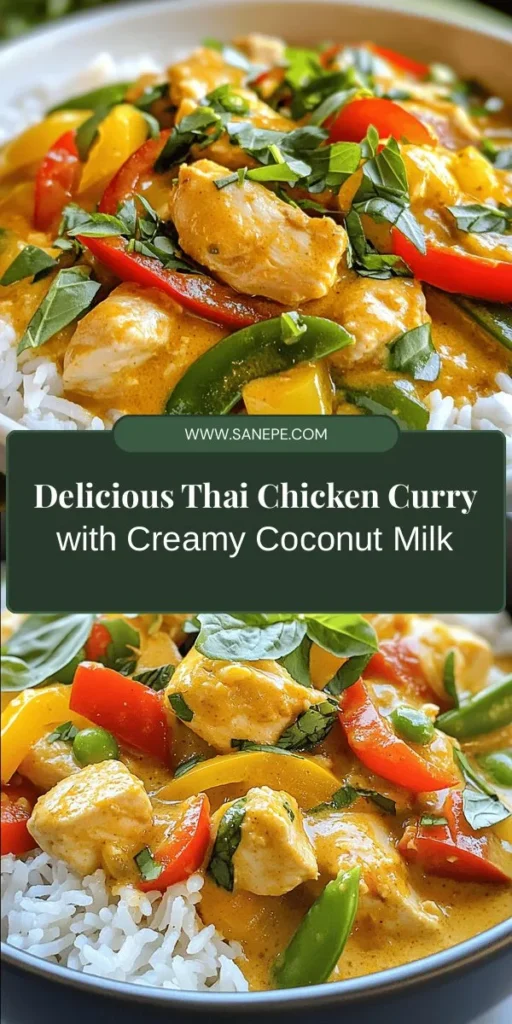Introduction
Thai cuisine has captured the hearts and palates of food lovers around the world, celebrated for its vibrant flavors, aromatic herbs, and the perfect balance of sweet, sour, salty, and spicy elements. Among the many delightful dishes that Thai gastronomy has to offer, Thai Chicken Curry with Coconut Milk stands out as a comforting and satisfying option. This dish elegantly showcases the hallmark characteristics of Thai cooking while being surprisingly easy to prepare at home.
Thai Chicken Curry with Coconut Milk is more than just a meal; it is an experience that combines the warmth of spices with the creaminess of coconut milk. The interplay of flavors is nothing short of magical, making each bite a delectable journey. The dish’s rich aroma fills your kitchen, inviting everyone to gather around the table. With its convenience, this recipe is perfect for busy weeknights or leisurely weekends.
In addition to its remarkable taste, this curry offers a wealth of health benefits thanks to its carefully selected ingredients. Packed with protein from the chicken, healthy fats from the coconut milk, and a variety of vegetables, this dish is a balanced meal that nourishes both body and soul.
Understanding the Ingredients
To create the perfect Thai Chicken Curry with Coconut Milk, it is essential to understand the key components of this dish. Each ingredient contributes to the overall flavor and texture, enhancing the authenticity of the curry.
Chicken Breast
At the heart of this curry is chicken breast, a lean source of protein that provides the dish with substance and depth. Chicken breast is not only versatile but also rich in essential nutrients, including B vitamins, phosphorus, and selenium. These nutrients play a vital role in energy metabolism and immune function.
When selecting chicken breast for your curry, it is crucial to choose fresh, high-quality meat. Opting for organic or free-range chicken can enhance the flavor and ensure that you are consuming meat that is free from harmful additives and antibiotics. Fresh chicken also cooks more evenly, resulting in tender, juicy pieces that absorb the flavors of the curry beautifully.
Coconut Milk
Coconut milk is a cornerstone of Thai cooking, lending its rich and creamy texture to the dish. This ingredient is derived from the flesh of mature coconuts and is known for its sweet, nutty flavor. Coconut milk not only adds a luscious creaminess to your curry but also provides a source of healthy fats, particularly medium-chain triglycerides (MCTs). These fats are easier for the body to digest and can provide a quick source of energy.
Moreover, coconut milk is a fantastic lactose-free alternative for those who are intolerant to dairy products, making this dish accessible to a wider audience. Whether you are a lactose-intolerant individual or simply someone looking to enjoy a creamy dish without the heaviness of dairy, coconut milk is the perfect solution.
Red Curry Paste
The magic of Thai Chicken Curry with Coconut Milk lies in its red curry paste. This ingredient is a blend of various spices, including dried red chilies, garlic, lemongrass, galangal, and lime zest. Each component contributes unique flavors that define the essence of Thai cuisine.
Red curry paste is known for its robust and vibrant flavor profile, which ranges from mildly spicy to intensely hot, depending on the brand and preparation. It enhances the dish’s authenticity and ensures that your curry is packed with aromatic goodness. When using red curry paste, it’s essential to adjust the quantity based on your heat tolerance and preference for spice.
Fresh Vegetables
A variety of fresh vegetables not only adds color and texture to your Thai Chicken Curry but also boosts its nutritional value. Key vegetables used in this recipe include:
– Red and Yellow Bell Peppers: These colorful additions not only enhance the dish’s visual appeal but also provide a sweet crunch and numerous vitamins, including vitamin C, which is essential for immune function and skin health.
– Snap Peas: Their crispness and natural sweetness offer a delightful contrast to the creaminess of the coconut milk. Snap peas are also high in fiber, vitamins A and C, and antioxidants, making them a nutritious addition.
Aromatics: Onion, Garlic, and Ginger
The aromatics—onion, garlic, and ginger—play a pivotal role in building flavor. Sautéing these ingredients releases their essential oils and infuses the oil with their distinct flavors, laying the foundation for a delicious curry.
– Onion: Adds sweetness and depth, serving as the base flavor.
– Garlic: Imparts a pungent aroma and robust flavor, enhancing the overall dish.
– Ginger: Offers a warm, spicy kick that complements the other flavors beautifully.
These aromatics are essential in Thai cooking, as they create a harmonious balance in the dish, elevating the overall taste.
Fish Sauce and Brown Sugar
To achieve the quintessential balance of flavors in Thai cuisine, the addition of fish sauce and brown sugar is crucial. Fish sauce is a staple in Thai cooking, providing a savory umami flavor that enhances the overall depth of the dish. It is made from fermented fish and is packed with nutrients, including omega-3 fatty acids.
On the other hand, brown sugar adds a touch of sweetness, counterbalancing the saltiness of the fish sauce. This sweet-savory dynamic is what makes Thai Chicken Curry with Coconut Milk so irresistible. Together, these ingredients harmonize the dish, creating a symphony of flavors that reflect the essence of Thai culinary traditions.
Step-by-Step Cooking Instructions
Creating the perfect Thai Chicken Curry with Coconut Milk begins with preparation. Before diving into the cooking process, it is essential to prepare your workspace and gather all the ingredients. This not only ensures a smoother cooking experience but also allows you to focus on the flavors and techniques involved.
Preparing the Workspace and Gathering Ingredients
Start by ensuring that your kitchen is clean and organized. Gather all the necessary ingredients, including chicken breast, coconut milk, red curry paste, fresh vegetables, aromatics, fish sauce, and brown sugar. Having everything within reach will make the cooking process more enjoyable and efficient.
Sautéing the Aromatics
Now that your workspace is ready, it’s time to start cooking. The first step in making your Thai Chicken Curry is to sauté the aromatics—onion, garlic, and ginger. Here’s how to do it properly:
1. Heat the Oil: In a large skillet or wok, heat a tablespoon of vegetable oil over medium heat. The oil should be hot but not smoking, as you want to sauté the aromatics without burning them.
2. Add the Onion: Begin by adding the chopped onion to the skillet. Sauté for 2-3 minutes until the onion becomes translucent and fragrant. This step builds the base flavor for your curry.
3. Incorporate Garlic and Ginger: Next, add minced garlic and grated ginger to the onions. Sauté them for an additional 1-2 minutes, stirring frequently to prevent burning. The aroma will be intoxicating, setting the stage for the delicious curry to come.
Cooking the aromatics before adding other ingredients is crucial for developing a deep, rich flavor profile. This technique allows the essential oils to infuse the oil, which will enhance the overall taste of your curry. Once the aromatics are sautéed to perfection, you’ll be ready to add the chicken and other ingredients, bringing your Thai Chicken Curry to life.
By meticulously preparing your ingredients and following these initial steps, you’re laying the groundwork for a delectable dish that is bound to impress family and friends alike. Stay tuned for the next part, where we’ll dive deeper into the cooking process and how to assemble this delicious Thai Chicken Curry with Coconut Milk.



